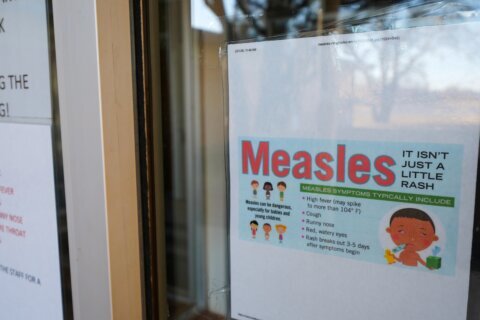WASHINGTON — Serious crimes across the Washington region are down slightly over previous years, according to new data being presented Wednesday to the Metropolitan Washington Council of Governments.
The 2014 Annual Report on Crime & Crime Control finds Part I crime across the region is down slightly compared to the previous three years, each of which have seen significantly less Part I crime than 2010’s peak of more than 135,000 incidents.
While the total number of violent crimes fell from 2013 to 2014, rapes were up 8.7 percent (86 more than in 2013); aggravated assaults were up 3.9 percent (321 more); larcenies were up 1.3 percent (1,109), and car thefts were also up slightly.
The Council of Government’s Police Chief’s Committee notes that overall crime numbers are dropping even as more people move into the region. The crime rate per capita in 2010 was 26.97 crimes per 1,000 residents; in 2014, it was 22.72 crimes per 1,000 residents.
That only counts the crimes the FBI counts as Part I, or violent, crimes: criminal homicides, rape (nonstatutory), robbery, aggravated assault, burglary, larceny, motor vehicle theft and arson.
The D.C. police reported the most homicides and rapes of any jurisdiction, 105 and 470 respectively. Of the localities included, only Montgomery County, Maryland, and Fairfax County, Virginia, have more residents.
Frederick County, Maryland, and Loudoun County, Virginia, had the lowest violent crime rates at 8.35 and 8.307 per 1,000 residents, respectively.
The committee says violent crime is about 13 percent of all crime in the region, with property crimes accounting for the rest.
The committee report recommends following simple safety tips and always reporting any suspicious activity:
Personal Safety
- Always be aware of your surroundings and the people around you.
- Walk with a friend, whenever possible.
- When walking, limit your use of mobile devices that may distract you.
- If you are going to be away for a period of time, let friends and family know your whereabouts.
Home Safety
- Install and use locks on your doors and windows.
- Keep doors locked, whether you are home or not.
- Before opening the door, check to see who it is before opening. If you do not know the person, ask for identification.
- Maintain good lighting around entrances.
- Leave a light, radio or TV on, or use timers, if you are going to be gone for an extended period of time.
- Do not leave spare keys in easily accessible areas. Instead, consider providing spare keys to trusted friends or neighbors.
- Make sure your mail is taken care of if you are away.
- Call the police immediately when you see suspicious people or activities.
Vehicle Safety
- Lock your doors when driving.
- Have your keys in your hand as you approach your vehicle.
- Check the inside of your vehicle prior to entering.
- Park in well‐lit, heavily traveled areas.
- Remove valuables from your vehicle. If you must keep items in your car, keep them out of sight by placing them in your trunk or glove compartment.
- After parking, ensure doors are locked and windows are closed.
- Don’t leave your keys in your car while it is running. When you park your car, take the keys. The Washington Area Vehicle Enforcement Task Force says the vast majority of vehicle thefts in the area involve cars left running with the keys inside.
- Keep an emergency kit containing a flashlight, flares and other essentials in your vehicle.
ATM Safety Tips
- Make sure you have memorized your personal identification number (PIN). Never write it down on your ATM card or keep it with the card. Never tell anyone your code or let them enter your code for you.
- Do not give out information about your PIN over the telephone — banks will never request such information.
- Try to use machines you are familiar with, and use terminals located in banks rather than independent terminals.
- Be aware of your surroundings. Look around before conducting a transaction. If you see anyone or anything suspicious, cancel your transaction and go to another ATM.
- If you must use an ATM after hours, make sure it’s well lighted.
- Use your body as a shield when making a transaction at the ATM.
- Never walk away from an ATM with cash still in hand. If you are going to count your money, do so at the ATM. Then take the time to put your money away before leaving.
- When making an ATM transaction from your car, be aware of your surroundings. Keep your eyes and ears open, and keep car doors locked.
- Report any lost or stolen cards as soon as you discover they’re missing.
- Check your receipts against your monthly statements to guard against ATM fraud.
- Shred your ATM receipts when you no longer need them.
Never …
- Carry large amounts of money with you.
- Leave your purse or wallet unattended in public.
- If someone attempts to steal your property, never fight.
- If you are robbed or assaulted, report the crime to the police. Try to describe the attacker accurately. Your actions can help prevent someone else from becoming a victim.







